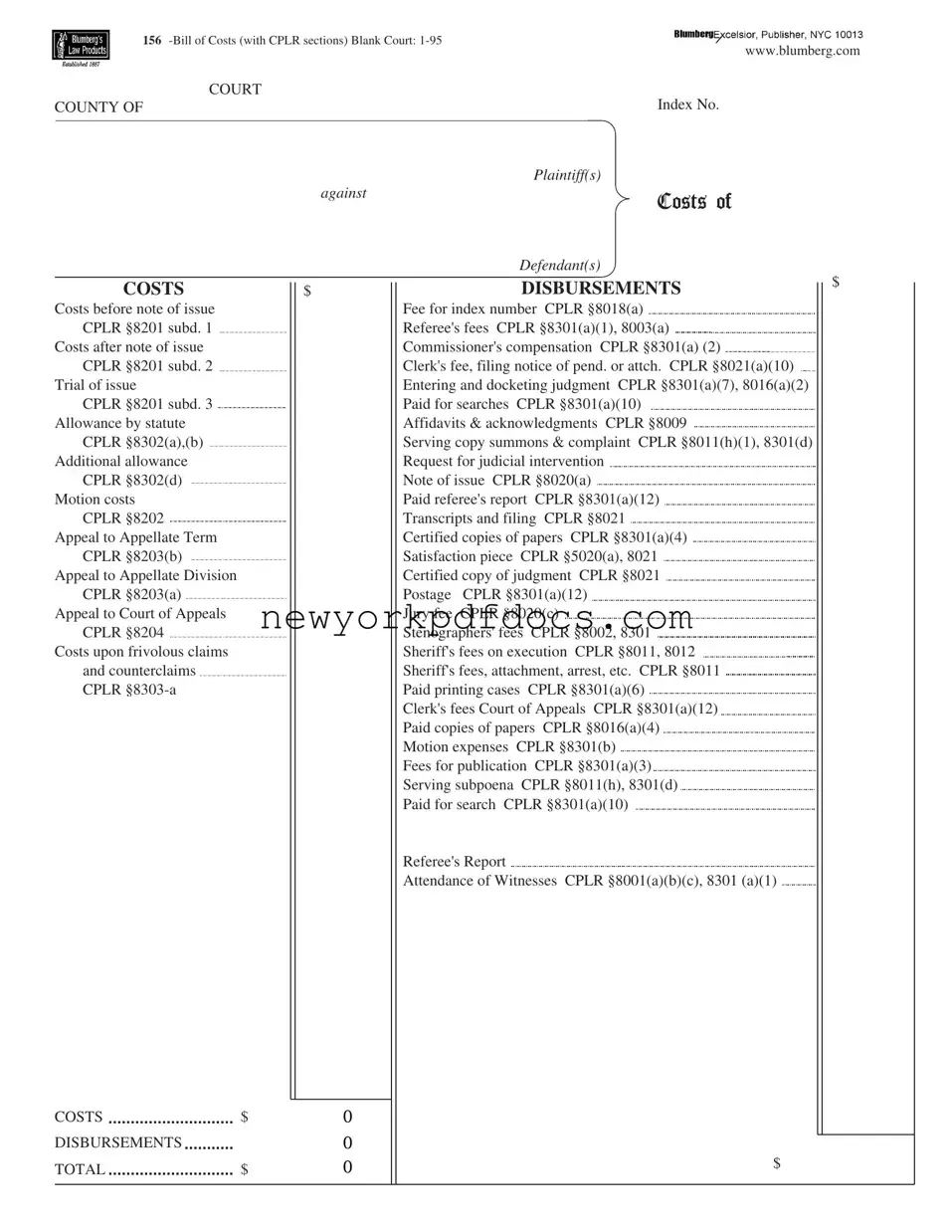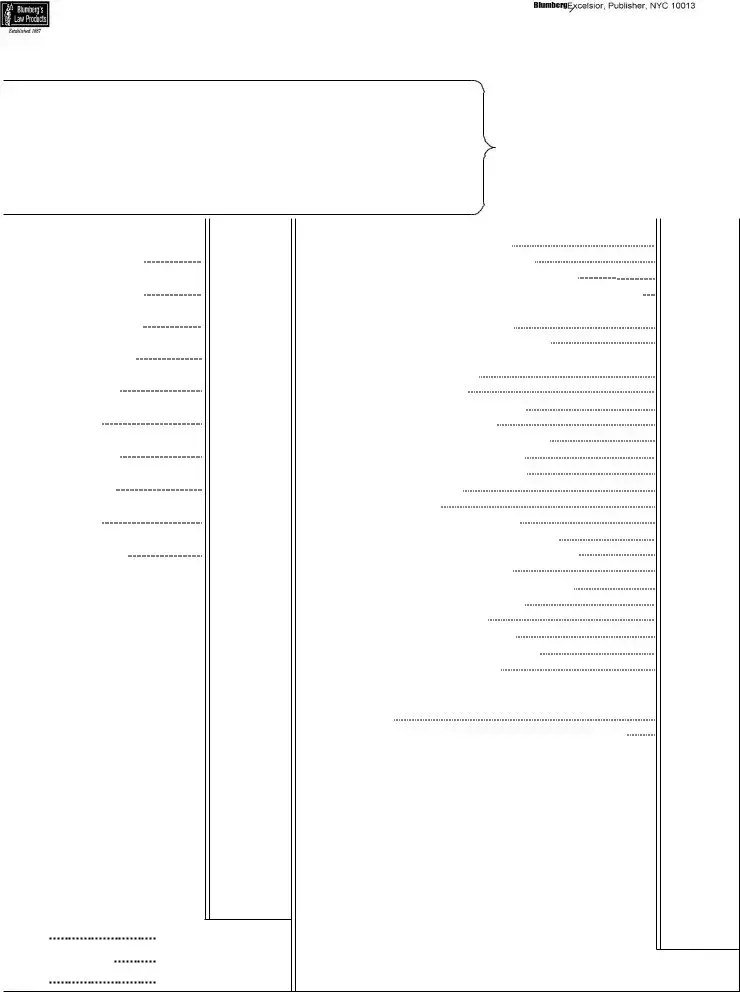State of New York, County of
ss.:
being duly sworn, deposes, and says; that deponent is not a party to the action, is over 18 years of age and resides at
That on
deponent served the within bill of costs and notice of taxation on
attorney(s) for
herein, at his/her office at
during his/her absence from said office. Strike out either (a) or (b).
(a) by then and there leaving a true copy of the same with
his/her clerk; partner; person having charge of said office.
(b)and said office being closed, by depositing a true copy of the same, enclosed in a sealed wrapper directed to said attorney(s), in the office letter drop or box.
Sworn to before me on
State of New York, County of |
ss.: |
being duly sworn, deposes and says; that deponent is not a party to the action, is over 18 years of age and resides at
That on
deponent served the within bill of costs and notice of taxation on
attorney(s) for at
the address designated by said attorney(s) for that purpose by depositing a true copy of same enclosed in a post paid properly addressed wrapper, in--a post office--official depository under the exclusive care and custody of the United Sates Post Service within New York State.
Sworn to before me on
Index No.
COURT
COUNTY OF
Plaintiff(s)
against
Defendant(s)
Bill of Costs
Please Take Notice that the within is a true copy of the items of costs and disbursements in the within action
taxed *
and the same will be taxed *
by the clerk of
Court, at his/her office in the courthouse thereof on
atM.
of that day--and the amount inserted in the judgment.
Yours, etc.
Attorney(s) for
To
Attorney(s) for
Service of the within bill of costs and notice of taxation is hereby admitted on
Attorney(s) for
ATTORNEY'S AFFIRMATION
STATE OF NEW YORK, COUNTY OF
ss.
The undersigned, an attorney admitted to practice in the courts of this state, affirms: that I am
the attorney(s) of record for the
in the above entitled action; that the foregoing disbursements have been or will be necessarily be made or incurred in this action and are reasonable in amount and that each of the persons named as witnessses attended as such witness on the trial, hearing or examination before trial herein the number of days set opposite their names; that each of said persons resided the number of miles set opposite their names, from the place of said trial, hearing or examination; and each of said persons, as such witness as aforesaid, necessarily traveled the number of miles to set opposite their names in traveling to, and the same distance in returning from, the same place of trial, hearing or examination; and that copies of documents or papers as charged herein were actually and necessarily obtained for use.
The undersigned affirms that the foregoing statements are true, under the penalties of perjury.
Dated:
The name signed must be printed beneath


